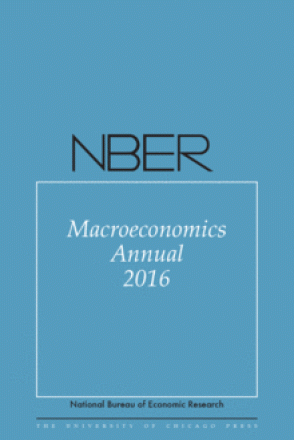NBER Macroeconomics Annual 2016, Volume 31

The NBER Macroeconomics Annual features a collection of theoretical and empirical studies on central issues in contemporary macroeconomics. Pierre-Olivier Gourinchas, Thomas Philippon, and Dimitri Vayanos analyze the causes of the Greek Crisis of 2010 and the policy efforts that ensued. Next, Olivier Blanchard, Christopher J. Erceg, and Jesper Lindé demonstrate that under plausible modeling assumptions, fiscal expansion by the core euro area economies would likely have a substantial positive effect on the GDP of nations on the periphery of the euro area, provided the European Central Bank holds policy rates low. In the third paper, Òscar Jordà, Moritz Schularick, and Alan M. Taylor introduce a new set of stylized facts about economic growth and financial ratios, and a new macro-financial database for the study of historical financial booms and busts. Jeffrey R. Campbell, Jonas D. M. Fisher, Alejandro Justiniano, and Leonardo Melosi study the historical effects of Federal Reserve efforts to provide guidance about the future path of the funds rate and conclude that forward guidance did not lead to macroeconomic expansion until late 2011 when the Fed introduced “calendar-based” communications. Next, Fernando Alvarez, Franceso Lippi, and Juan Passadore explore the distinctions between models of price setting and associated nominal frictions using data on price setting behavior. Paul Beaudry, Dana Galizia, and Franck Portier consider the possibility that the economy displays nonlinear dynamics that lead to cycles rather than long-term convergence to a steady state. Finally, Lawrence Summers discusses the decline in the rate of global economic growth, and causes and implications of the relatively low cumulative rate of U.S. per capita income growth since the onset of the Great Recession in December 2007.


